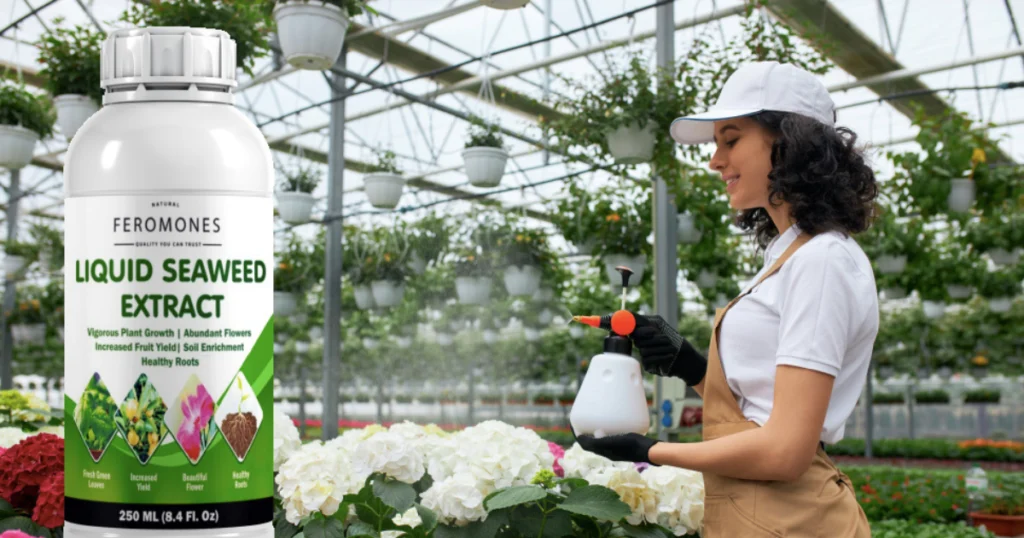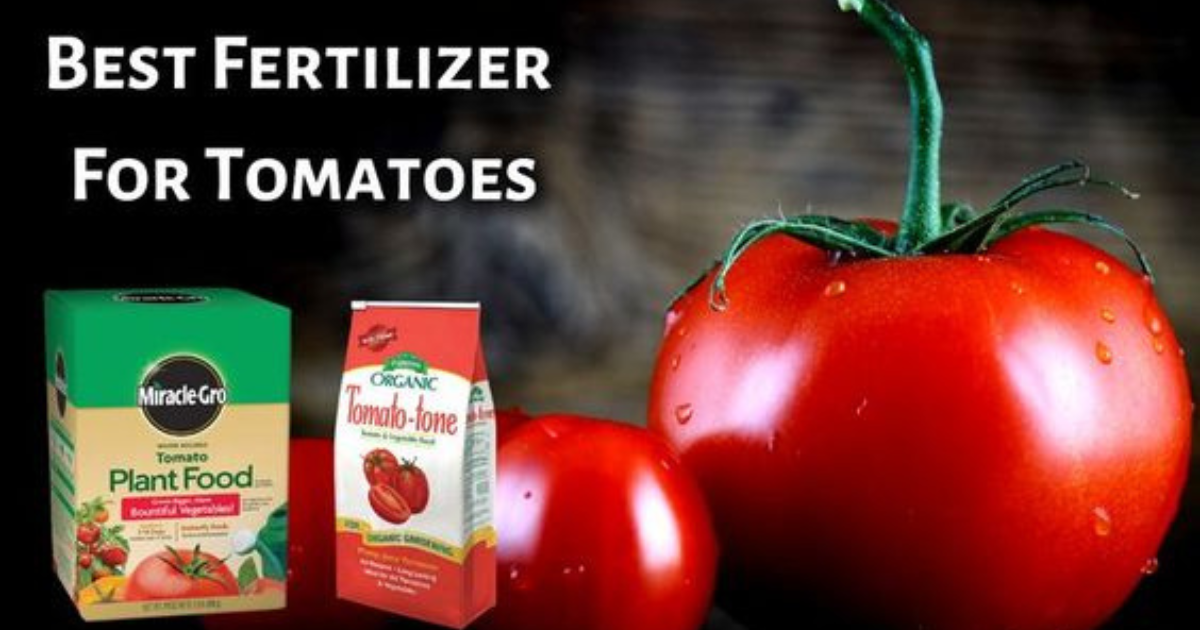Introduction
Have you ever experienced the frustration of a tomato garden that wouldn’t produce? Or have you tasted those bland, flavorless tomatoes that seem normal these days? If so, you’re not alone. The key to growing juicy, flavorful tomatoes lies in proper fertilization. And when it comes to organic gardening, choosing the right fertilizer can make all the difference.
This comprehensive guide will explore the top organic tomato fertilizers to help you cultivate a bountiful harvest. We’ll delve into the nutritional needs of tomato plants, the benefits of organic fertilizers, and how to apply them effectively. By the end of this article, you’ll have the knowledge and tools to grow the best tomatoes of your life.
advertisement
Understanding the Nutritional Needs of Tomato Plants
Tomato plants are voracious feeders, requiring a steady supply of essential nutrients to thrive. The three primary nutrients they need are nitrogen (N), phosphorus (P), and potassium (K).
- Nitrogen (N): Essential for healthy leaf growth and vibrant green color.
- Phosphorus (P): Promotes vigorous root development and flower production.
- Potassium (K): Enhances fruit quality, flavor, and disease resistance.
In addition to these macronutrients, tomato plants require secondary nutrients like calcium (Ca) and magnesium (Mg) for optimal growth and development.
Benefits of Organic Tomato Fertilizers
Organic fertilizers offer many benefits for your tomato plants and the environment. Here are some of the key advantages:
- Environmental Friendliness: Organic fertilizers are derived from natural sources and do not contain synthetic chemicals. This helps to protect the environment and reduce pollution.
- Enhanced Flavor and Quality: Organic fertilizers promote the development of nutrient-rich, flavorful tomatoes.
- Longer Shelf Life: Organic fertilizers can help strengthen plant cell walls, resulting in tomatoes that can last longer.
- Improved Soil Health: Organic fertilizers can improve soil structure, increase water retention, and enhance microbial activity.
Best Organic Tomato Fertilizers
Now that you understand the nutritional needs of tomato plants and the benefits of organic fertilizers let’s explore some of the best options available:
1. Compost
Compost is a valuable organic fertilizer that can provide a wide range of nutrients to tomato plants. It can be made from various materials, including kitchen scraps, yard waste, and manure.

How to use compost:
- Side dressing: Apply a layer of compost around the base of your tomato plants, being careful not to touch the stems.
- Incorporating into the soil: Mix compost before planting to improve fertility and structure.
2. Manure
Manure is another excellent organic fertilizer that can provide essential nutrients to your tomato plants. It is rich in nitrogen, phosphorus, potassium, and other beneficial microorganisms.

How to use manure:
- Composted manure: Apply a layer of well-composted manure around the base of your tomato plants.
- Liquid manure: Dilute liquid manure and apply it as a foliar spray or soil drench.
3. Fish Emulsion
Fish emulsion is a liquid fertilizer derived from fish waste. It is a highly concentrated source of nitrogen and other micronutrients.

S’ouvre dans une nouvelle fenêtrewww.amazon.com
fish emulsion bottle
How to use fish emulsion:
advertisement
- Foliar spray: Dilute fish emulsion and spray it onto the leaves of your tomato plants.
- Soil drench: Dilute fish emulsion and apply it to the soil around the base of your tomato plants.
4. Seaweed Extract
Seaweed extract is a natural plant growth hormone that can help to stimulate root growth, improve nutrient uptake, and enhance plant health.

S’ouvre dans une nouvelle fenêtrewww.flipkart.com
seaweed extract bottle
How to use seaweed extract:
- Foliar spray: Dilute seaweed extract and spray it onto the leaves of your tomato plants.
- Soil drench: Dilute seaweed extract and apply it to the soil around the base of your tomato plants.
5. Blood Meal
A blood meal is a high-nitrogen fertilizer that can help to promote healthy leaf growth.

S’ouvre dans une nouvelle fenêtreamazon.com
blood meal
How to use blood meal:
- Side dressing: Apply a layer of blood meal around the base of your tomato plants.
6. Bone Meal
Bone meal is a high-phosphorus fertilizer that can help to promote root development and flower production.

S’ouvre dans une nouvelle fenêtrewww.espoma.com
bone meal
How to use bone meal:
- Side dressing: Apply a layer of bone meal around the base of your tomato plants.
7. Wood Ash
advertisement
Wood ash is a natural source of potassium and calcium. It can help to improve fruit quality and disease resistance.

S’ouvre dans une nouvelle fenêtrewikipedia.org
wood ash
How to use wood ash:
- Side dressing: Apply a layer of wood ash around the base of your tomato plants.
How to Apply Organic Tomato Fertilizers
There are several different methods for applying organic tomato fertilizers:
- Side Dressing: Apply a layer of fertilizer around the base of your tomato plants, being careful not to touch the stems.
- Foliar Feeding: Spray a diluted fertilizer solution onto your tomato plants’ leaves.
- Soaker Hose: Apply a diluted solution of fertilizer through a soaker hose.
DIY Organic Fertilizer Recipes
In addition to store-bought organic fertilizers, you can make your own at home using simple ingredients. Here are a few recipes:
- Kitchen Scraps: Combine kitchen scraps like vegetable peelings, coffee grounds, and eggshells to create a nutrient-rich compost tea.
- Comfrey Tea: Steep comfrey leaves in water to create a liquid fertilizer rich in minerals and vitamins.
Tips for a Successful Tomato Harvest
In addition to using organic fertilizers, there are a few other tips that can help you grow a successful tomato harvest:
- Mulching: Apply a layer of mulch around the base of your tomato plants to help conserve moisture, suppress weeds, and regulate soil temperature.
- Watering: Water your tomato plants deeply and infrequently. Avoid overhead watering, which can lead to fungal diseases.
- Pruning: Prune your tomato plants to remove excess foliage and improve air circulation.
- Pest and Disease Control: Monitor your tomato plants for pests and diseases and take action to control them as needed.
Conclusion
Using organic fertilizers and following these tips, you can grow healthy, flavorful tomatoes that will delight your taste buds. Remember, the key to success is to choose suitable fertilizers, apply them correctly, and provide your tomato plants with the care they need.
With a little effort, you can enjoy a bountiful harvest of delicious tomatoes you can be proud of.


